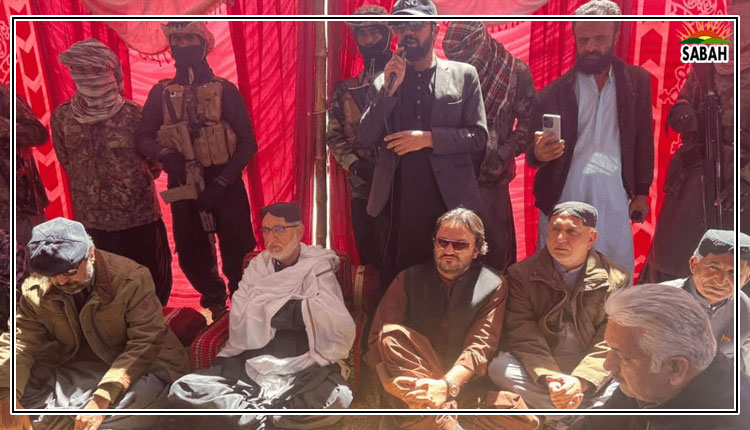The heat is on …. F.S. Aijazuddin
ONE day it was the cool comfort of spring. The next morning summer arrived with the force of an unwelcome intruder. Until October, life will be hell on earth, especially in hell’s scorching suburb called Pakistan.
Yet again, our nation is caught between mismatched policies and their endless impact, between our energy requirements and erratic availability. Over the past 30 years, every government has laid a Humpty Dumpty egg of an energy policy. In March 1994, a new energy policy, issued with the benediction of the World Bank, addressed three aspects: our inadequate capacity (then 10,800 MW), the growth pattern of demand over the previous 25 years (eight per cent per year), and an anticipated requirement of 54,000 MW by 2018.
In September 1994, the US secretary of energy, Hazel O’Leary (a political version of Tina Turner and later president of an insolvent Fisk University), led a delegation of 90 American business persons to Pakistan. During her visit, 16 agreements were signed envisaging an investment of $4 billion in Pakistan’s energy sector. Within two months, the Power and Infrastructure Board boasted that it had received “an overwhelming response … with applications for over 25,000 MW against the target of about 5,000 MW till Dec. 1997”. It also announced that the discovery of coal deposits in the Tharparkar area of Sindh was “so large that even if half of it is extracted it can provide fuel for 100,000 MW power plants for 30 years”.
Thirty years have passed. According to Nepra’s State of Energy Report 2023, Pakistan’s installed capacity in June 2023, stood at 45,885 MW, well below the 1994 projections of 54,000 MW. The installed capacity for imported coal-based power projects is 3,960 MW, while local coal, sourced from Block-I and Block-II of the Thar coal mines, contributes 2,640 MW (2.6pc of 1994’s ambitions). Feedstock of coal-based plants is imported, like the expensive ore used to bankrupt Pakistan Steel Mills. It comes from South Africa and Indonesia under long-term contracts, their price “unregulated, lacking oversight in terms of price determination”.
Is there a solution to the power conundrum?
The 1994 policy introduced an innovative bulk power tariff, comprising an energy price and a capacity price at a notional total of 6.5 cents per kilowatt hour. The energy price covered fuel cost and the variable operating costs of the power plant (2.2 cents). Responsibility for fuel supply lay on the government through Pakistan State Oil or Sui Southern Gas. The capacity price of 4.3 cents was calculated to cover debt repayment obligations, fixed operating and maintenance costs and return on equity (17pc). The private sector plants were protected against Wapda waywardness through ‘take or pay’ provisions in power purchase agreements. Under the ‘take or pay’ clauses, Nepra tells us, “payments are made for contracted capacity, regardless of whether it is consumed or not. The unutilised capacity places a financial burden on electricity consumers, who end up paying for unused power. During FY2022-23, the utilisation factor was 34pc […] and the amounts paid to power plants amounted to Rs46.59bn”.
In the 1990s, to improve efficiency in transmission and distribution, the World Bank persuaded the government to unbundle Wapda’s downstream monopoly, creating independent localised distribution companies (Lesco, Pesco, etc.). Today, there are 12, each operating at varying levels of inefficiency. Distribution losses involve a loss of Rs160.5bn. Pesco alone accounts for half the losses — at Rs77.35bn — an unnecessary threat to inter-provincial harmony. Government officials watch mindlessly as the energy sector circular debt “jumped to Rs5.7 trillion as of November 2023”. Rs2.7tr is owed in the power sector and Rs3tr in the gas sector.
Yet, the World Bank still advises that “companies specialising in infrastructure development can participate in projects aimed at enhancing the energy distribution network”. And the Asian Development Bank has committed $250 million for “the Power Transmission Strengthening Project, which will help boost national grid stability, energy security, transmission capacity, and effective national transmission system management”.
Meanwhile, consumers faced with daily power outages and escalating monthly energy bills wonder whether there is a solution to this power conundrum. Or are we condemned to scavenge for private sector alternatives (like home generators and rooftop solar panels) to compensate for public sector incompetence?
One is reminded of the response given by P. Chidambaram (then India’s finance minister) to an inquisitor who asked him how he intended to implement his government’s plans. His terse reply was: “By doing it.” Pakistanis can do it. They succeed everywhere else. Their flesh is willing; only their governance is weak.
The writer is an author.
www.fsaijazuddin.pk
Courtesy Dawn, May 30th, 2024












